Submitted by WA Contents
Wolfgang Buttress’ bee-inspired Pavilion moved to Kew Gardens
United Kingdom Architecture News - Jul 28, 2016 - 13:58 24930 views
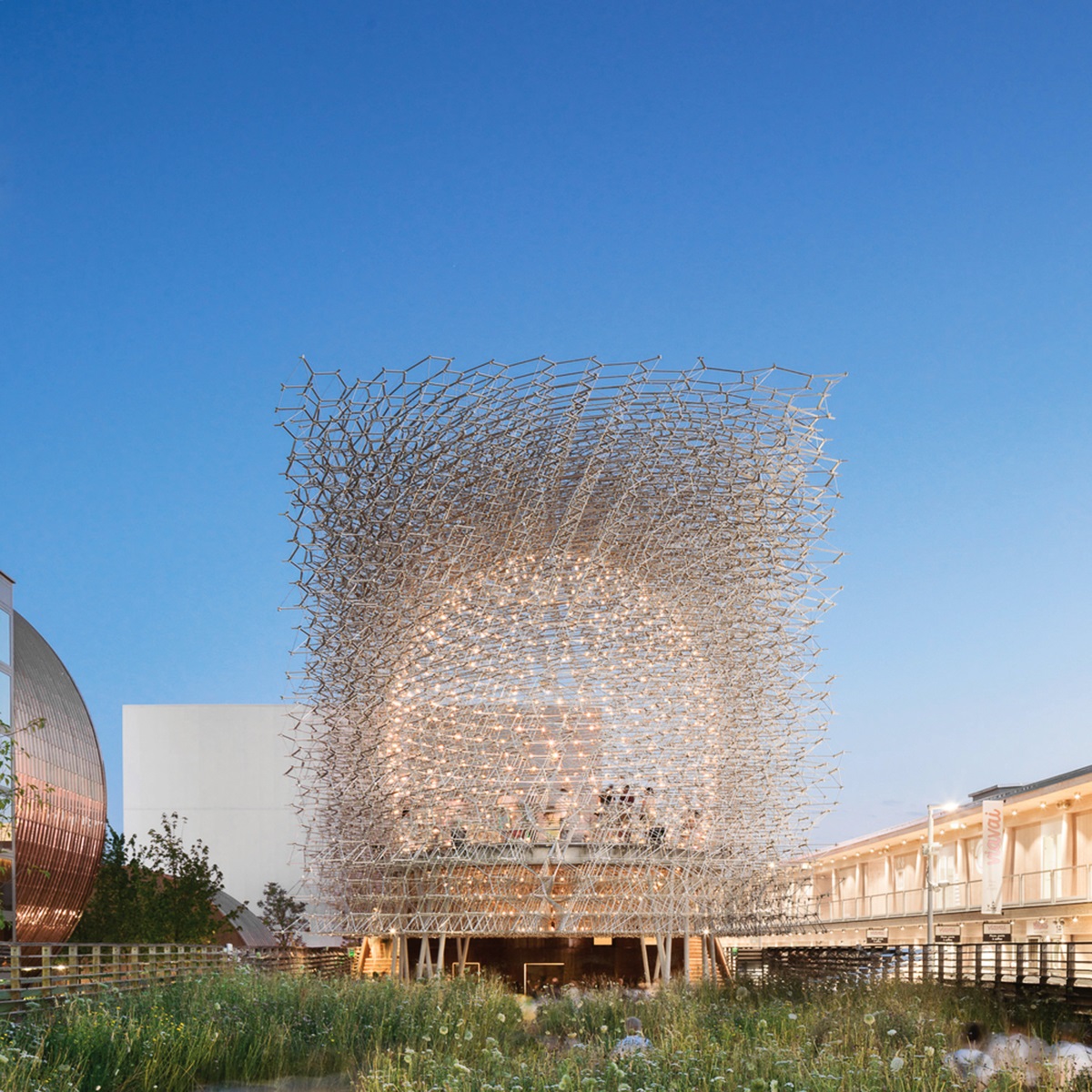
British artist and creative lead Wolfgang Buttress' bee-inspired honeycomb Pavilion called 'The Hive Pavilion' has now been moved to Kew Gardens and reopened to the public on June 2016. Buttress' pavilion was originally created for the Milano Expo 2015 and will be on view until November 2017 at the Kew Gardens. The honeycomb structure attracted over 3.3 million visitors at the Milano Expo 2015 and became one of the main attractions.
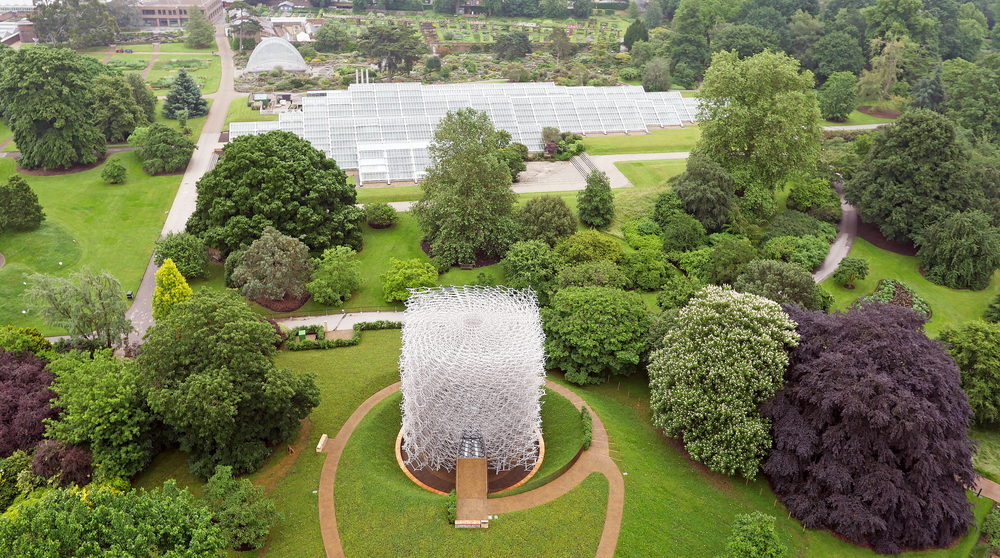
The Hive Pavilion is a volumetric open-air structure standing at 17 metres tall and weighing in at 40 tonnes, The Hive encapsulates the story of the honey bee and the important role of pollination in feeding the planet, through an immersive sound and visual experience.
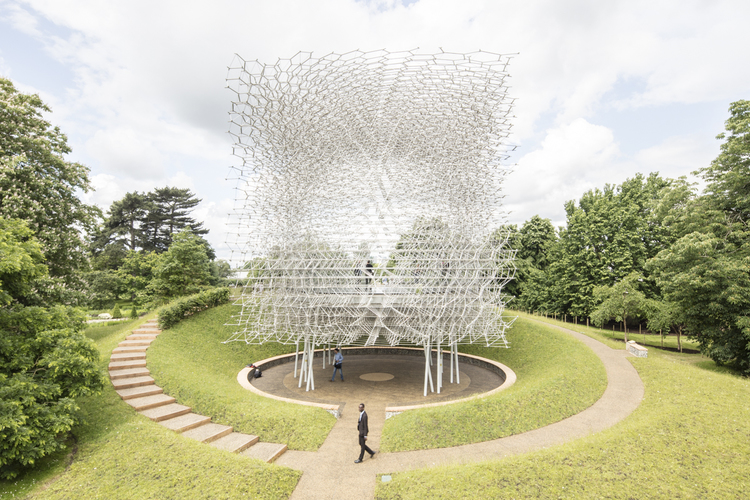
The Hive was constructed from around 170,000 parts including thousands of pieces of aluminium which catch the changing sunlight. There are 1,000 LED lights dotted around its core which glow and fade, while a unique soundtrack hums in response to the activity of real bees in a beehive behind the scenes at Kew.
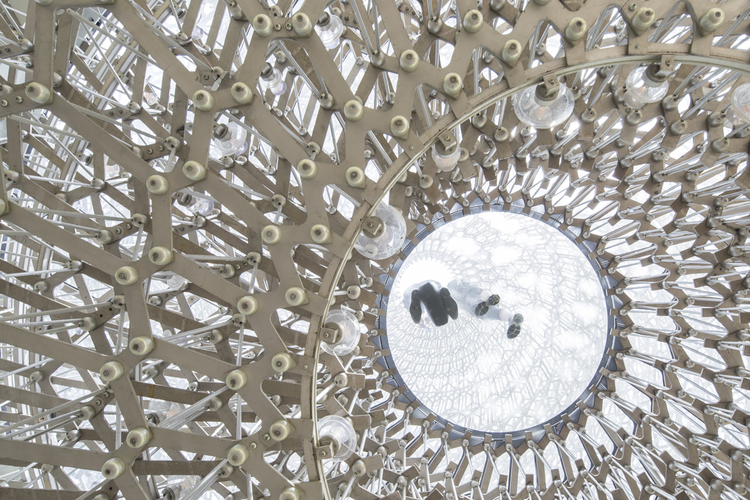
The artist's conceptual design approach is conceived as an abstracted analogue of a honeycomb. This rotational twist in the structure introduces movement, suggestive of a swarm. The form is a 14m cube raised-up on columns, appearing almost to hover above the meadow. A spherical void hollowed from the centre, allows visitors to enter. Walking beneath the sculpture, visitors may peer up through the glass floor into the interior.
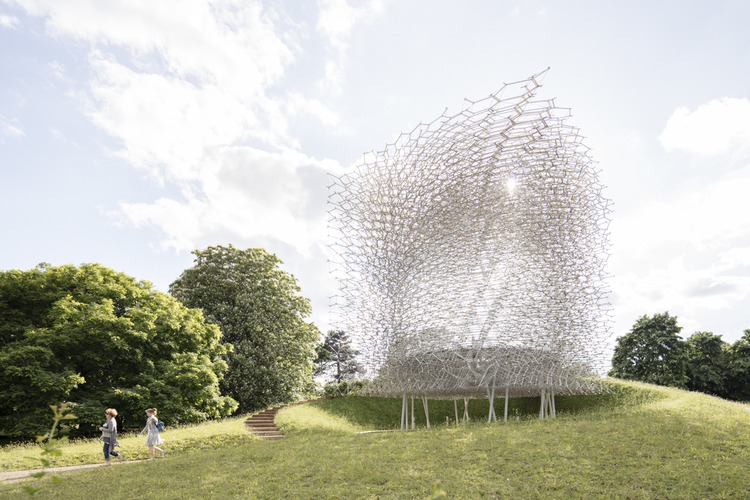
Vibration sensors (accelerometers) are used to measure the activity of a real bee colony living at Kew, feeding live signals to 1000 LED luminaires which line the interior of the Hive. Algorithms are used to convert these vibrational signals into lighting effects, allowing the Hive to convey a visual representation of the state of the colony.
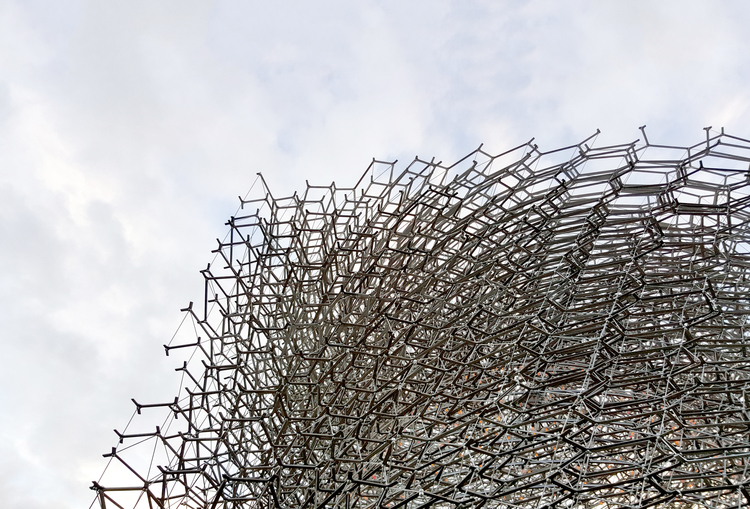
This visual experience is complemented by a soundscape based upon prerecorded bee sounds and harmonious stems crafted by an ensemble of musicians.
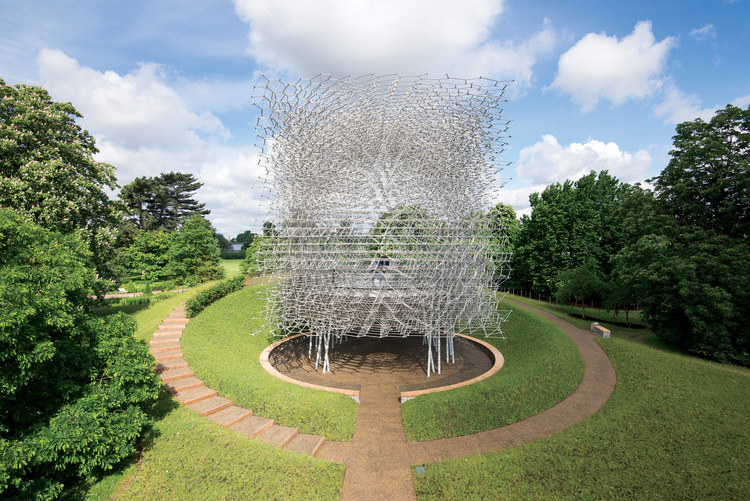
The Hive represents the intrinsic and important relationship between bee and human bringing together art, science, sound and landscape through an immersive and multi-sensory experience.

Wolfgang Buttress at the Hive Pavilion
The multi award-winning pavilion, The Hive, is derived from a scientific research focusing on the health of honeybees and it has become a visual symbol of the pollinators’ role in feeding the planet and the challenges facing bees today.

To discover the experience, at the first phase, bone conductors have been installed in the area under The Hive. These convert the sound into vibrations which, when touched with a wooden stick, travel directly to the skull, and represent the secrets of bee communication through vibrations.
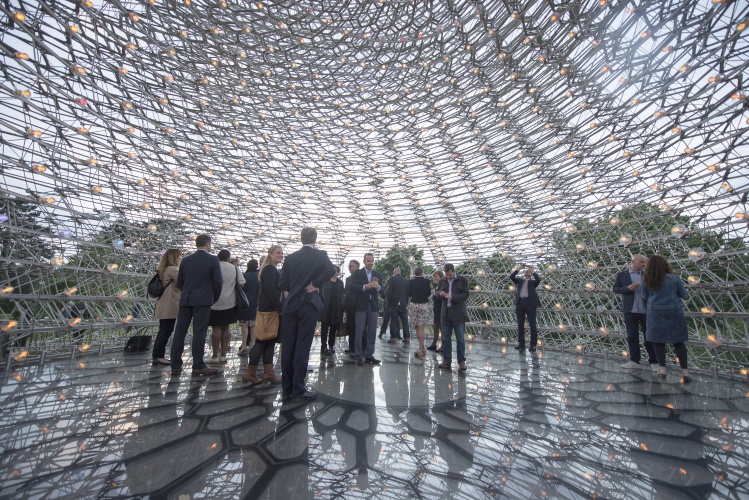
This communication between honey bees was only recently discovered by scientists at Nottingham Trent University, led by Dr Martin Bencsik and was an influencing force behind Wolfgang Buttress's design of The Hive, integrating art, architecture with science in a built environment.


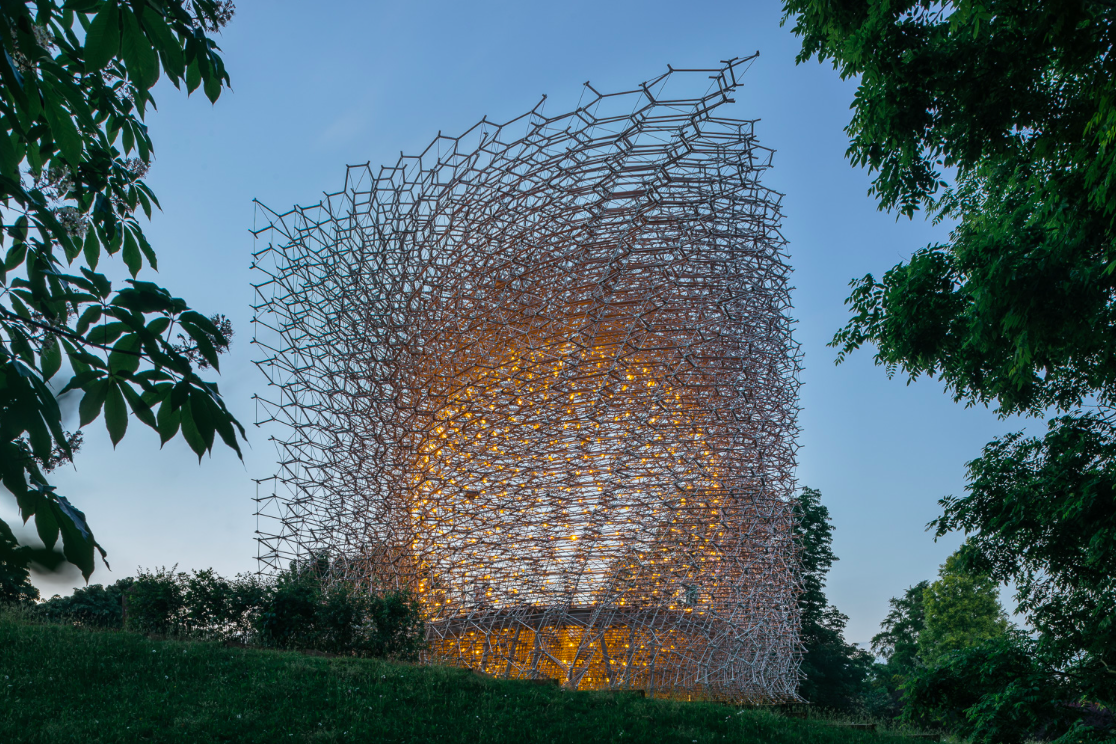

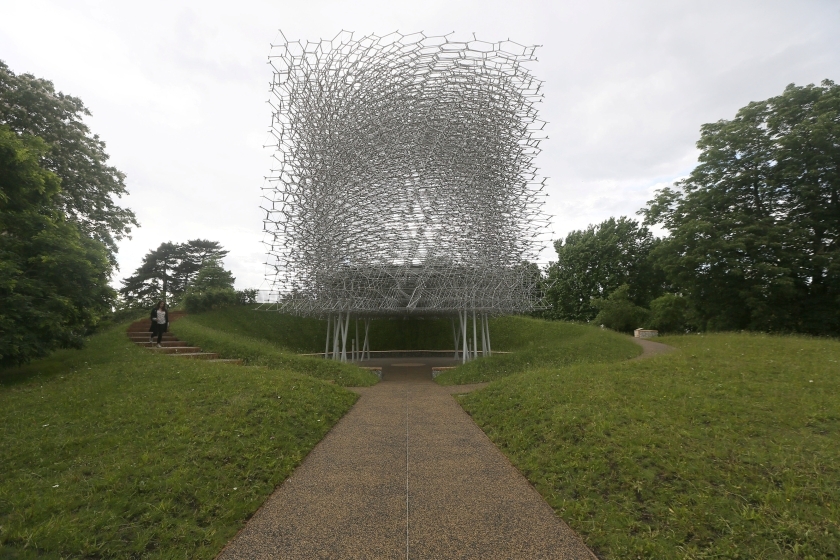

Project Facts
Artist + Creative Lead: Wolfgang Buttress
Architecture, landscape architecture and environmental engineering: BDP
Structural Engineers: Simmonds Studio
AV & Graphic Content: Squint Opera
Manufacture And Production: Stage One
Physicist and Bee Expert: Dr. Martin Bencsik: Nottingham, Trent University
Sound & Acoustic Consultants: Hoare Lea
All images © Dacian Groza, Jeff Eden, Laurian Ghinitoiu, Skyvantage
> via Kew Gardens / Wolfgang Buttress
